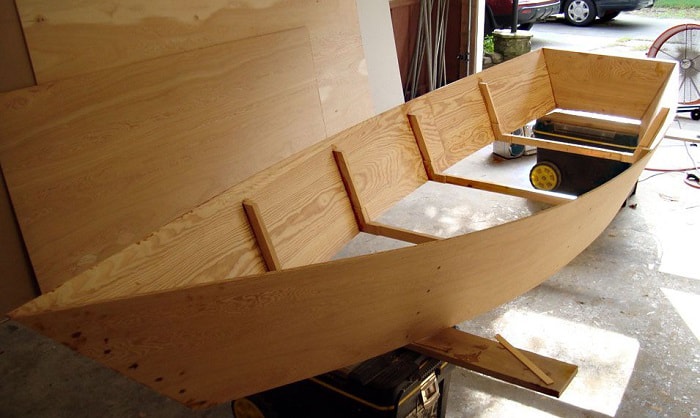
Beyond the Blueprint: Unveiling Hidden Secrets of Scaling Up Plywood Boat Plans
Scaling up plywood boat plans seems straightforward: multiply dimensions, right? Wrong. While the basic principle holds, successfully scaling a small plywood boat design into a larger vessel is a nuanced process fraught with potential pitfalls. This article dives beyond the obvious, exploring less-discussed aspects crucial for achieving a seaworthy and structurally sound larger craft.
The Unspoken Challenges of Simple Scaling: A Q&A Approach
Let's address some common misconceptions and hidden complexities through a question-and-answer format.
Q: If I double the dimensions, I double the strength, right?
A: Absolutely wrong! This is a classic mistake. Scaling up linearly doesn't translate to a linear increase in strength. The strength of a beam (like a boat's hull) is proportional to its width cubed (or its depth cubed, depending on the orientation). Doubling the dimensions increases the volume (and weight) eightfold, but the strength only increases eightfold relative to its original dimensions. This means your larger boat will be proportionally weaker, demanding a significant redesign to maintain structural integrity. Consider using thicker plywood, adding reinforcing members, or even changing the overall design to account for the increased stress.
Q: My plans call for marine-grade plywood; is that enough for a larger boat?
A: While marine-grade plywood is essential, its suitability depends on the scale and the design. For larger boats, you might need to explore more robust options such as laminated plywood or even consider using fiberglass cloth and epoxy resin for added strength and water resistance. Recent research in composite materials (e.g., studies published in the Journal of Composite Materials) highlights the advantages of hybrid constructions for enhanced performance and durability in marine environments.
Q: Can I simply increase the thickness of the plywood to compensate for increased size?
A: Partially. Increasing plywood thickness will improve strength, but it will also dramatically increase weight, potentially impacting buoyancy and stability. A thicker hull might also negatively affect the boat's performance and handling. Optimal solutions involve a holistic approach involving material selection, structural reinforcements, and a potentially revised design considering the increased weight and stress.
Beyond the Numbers: Real-World Lessons and Creative Solutions
Scaling up isn't just about mathematics; it's about understanding the physics involved and adapting accordingly. Here's a real-world example:
A hobbyist scaled up a 10ft dinghy design to a 20ft version, relying solely on doubling dimensions. The result? A boat that was prone to flexing and cracking under relatively light loads. The lesson learned? Simple scaling is inadequate. The builder had to rework the entire design, incorporating additional structural components like bulkheads, stringers, and frames to redistribute stress and support the weight. This resulted in a significant increase in build time and material cost but created a far more robust and seaworthy vessel.
Creative Solutions for Successful Scaling:
- Finite Element Analysis (FEA): Employing FEA software allows you to simulate the stresses and strains on the boat's structure under various conditions. This provides invaluable data-driven insights for optimizing design and material selection.
- Consult with Naval Architects: Experienced naval architects possess the knowledge and expertise to guide you through the complex process of scaling up boat designs, ensuring structural integrity and optimal performance.
- Consider a Hybrid Approach: Incorporating different materials â€" such as combining plywood with fiberglass or epoxy resins â€" can achieve better strength-to-weight ratios compared to using plywood alone.
Conclusion: Embrace the Challenge, Master the Craft
Scaling up plywood boat plans is a challenging yet rewarding endeavor. By acknowledging the limitations of simple scaling and embracing innovative approaches such as FEA and material experimentation, you can transform your plans from a theoretical exercise into a seaworthy reality. Remember, understanding the underlying principles of structural mechanics and boat building is paramount to success. This detailed approach, beyond simple multiplication, will lead to a stronger, safer, and more successful outcome.

0 comments:
Post a Comment
Note: Only a member of this blog may post a comment.